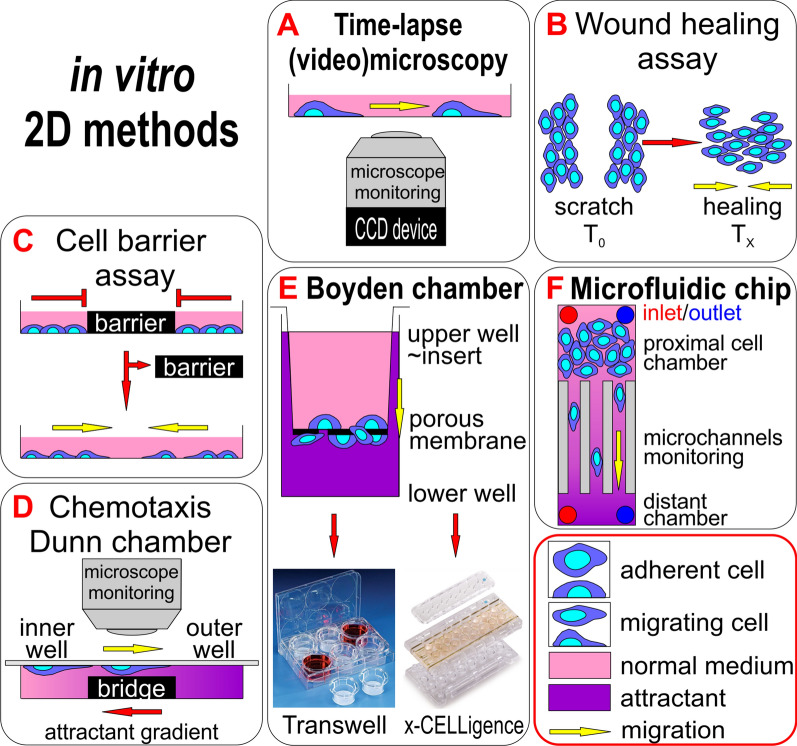Fig. 2.
Principles of 2D migration and invasiveness analysis methods according to their simplicity. A The easiest method is monitoring cell movement over time using a light microscope or recording cell movement with a camera. B, C Both wound healing and cell barrier assay methods are based on preparing a defined gap in a cell layer and monitoring the movement of cells to occupy the empty area over time. D The Dunn chamber method combines the chemotactic movement of cells and its monitoring over time. E The Boyden chamber method is based on cell movement through a porous membrane to a chemoattractant and enables invasion assays in a 3D environment with the usage of ECM components; Transwell and x-CELLigence methods use this basic principle with differences in cell movement monitoring: Transwell with the staining of migrated cells or with migrated cell metabolic activity measurement, x-CELLigence with impedance measurements [186, 187]. F Microfluidics provide an additional dimension in migration analysis of the cells by implementing media flow in a defined space (microchannels), mimicking cell behavior in blood or lymph vessels

